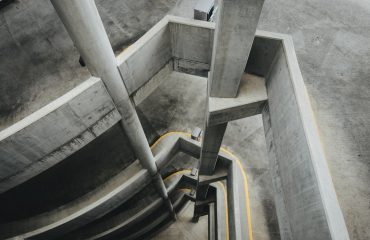Galvanized steel, a ubiquitous material in construction, infrastructure, and manufacturing, owes its widespread use to its exceptional corrosion resistance. This article delves into the science behind this resistance, exploring the process, applications, limitations, and factors that influence its longevity. Understanding these aspects is crucial for selecting the right material for various projects, ensuring durability and cost-effectiveness.
The Science Behind Galvanization: A Protective Zinc Barrier
Galvanization is a process that involves coating steel with a layer of zinc. This zinc coating acts as a sacrificial anode, protecting the underlying steel from corrosion. The process typically involves either hot-dip galvanizing, where the steel is immersed in molten zinc, or electro-galvanizing, where zinc is electroplated onto the steel surface. Hot-dip galvanization provides a thicker, more durable coating, offering superior corrosion protection compared to electro-galvanizing. The zinc layer protects the steel in two primary ways:
- Barrier Protection: The zinc coating acts as a physical barrier, preventing oxygen and moisture from reaching the steel surface. This is particularly effective in preventing initial corrosion.
- Sacrificial Protection (Cathodic Protection): Zinc is more electrochemically active than steel. In the presence of moisture and oxygen, zinc corrodes preferentially to steel. This means that even if the zinc coating is scratched or damaged, the underlying steel remains protected as long as there is sufficient zinc remaining. The zinc acts as a sacrificial anode, oxidizing instead of the steel.
Applications of Galvanized Steel: Where Durability Matters
The exceptional corrosion resistance of galvanized steel makes it ideal for a wide range of applications, particularly in environments prone to corrosion. Some key applications include:
- Construction: Roofing, siding, structural components, guardrails, and fencing all benefit from the durability provided by galvanized steel.
- Automotive Industry: Used in body panels, undercarriage components, and exhaust systems where exposure to harsh elements is common.
- Infrastructure: Bridges, pipelines, and transmission towers are often constructed using galvanized steel to withstand years of environmental exposure.
- Appliances and Manufacturing: Galvanized steel is used in various appliances, machinery, and other manufactured goods where corrosion resistance is vital.
- Agricultural Applications: Used in greenhouses, storage structures, and farm equipment, where exposure to moisture and soil is constant.
Limitations of Galvanized Steel: Understanding its Weaknesses
While galvanized steel offers excellent corrosion resistance, it is not impervious to corrosion under all conditions. Some limitations include:
- High Chloride Environments: In environments with high concentrations of chloride ions (like saltwater), the protective zinc layer can be compromised, leading to accelerated corrosion. This is because chloride ions can penetrate the zinc layer and initiate pitting corrosion.
- Abrasion and Damage: Physical damage to the zinc coating, such as scratches or cuts, can expose the underlying steel to corrosion. The severity depends on the extent of the damage and the environmental conditions.
- Hydrogen Embrittlement: During the galvanizing process, hydrogen can be absorbed by the steel. This can lead to hydrogen embrittlement, making the steel more susceptible to cracking under stress.
- Temperature Limitations: At extremely high temperatures, the zinc coating can degrade, reducing its protective properties. The exact temperature limit depends on the specific application and the type of galvanizing process used.
Factors Affecting the Longevity of Galvanized Steel: Maximizing its Life Span
Several factors influence the lifespan of galvanized steel, including:
- Coating Thickness: A thicker zinc coating provides longer-lasting protection against corrosion. Hot-dip galvanizing typically results in thicker coatings than electro-galvanizing.
- Environmental Conditions: Exposure to harsh environments (e.g., high humidity, salinity, industrial pollutants) accelerates corrosion. Proper surface preparation before galvanizing is also crucial.
- Surface Preparation: Thorough cleaning and preparation of the steel surface before galvanizing is essential for ensuring proper adhesion of the zinc coating. This prevents premature corrosion.
- Post-Galvanizing Treatments: Applying protective coatings or paints over the galvanized steel can further enhance its corrosion resistance and extend its lifespan.
Choosing the Right Galvanized Steel: Considerations for Specific Applications
Selecting the appropriate type and grade of galvanized steel is crucial for ensuring its longevity and performance in a given application. Factors to consider include:
- The intended application and its environmental exposure. For example, galvanized steel used in marine environments requires a thicker zinc coating than that used in less corrosive environments.
- The required mechanical properties of the steel. The choice of steel grade will depend on the strength and other properties needed for the application.
- The cost of different galvanizing processes and coating thicknesses. Balancing cost with the required level of corrosion protection is essential.
- The availability of different grades and types of galvanized steel from suppliers. Ensure the selected material meets all the necessary specifications and standards.
In conclusion, galvanized steel’s superior corrosion resistance stems from the protective zinc coating’s barrier and sacrificial properties. Understanding its applications, limitations, and the factors influencing its lifespan is vital for engineers, designers, and anyone involved in selecting materials for projects where durability and longevity are paramount.




